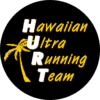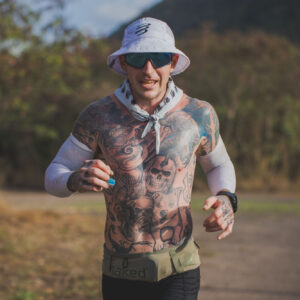Big Island Saddle Run is coming on May 13 (Saturday)
Contact:
Kawika Spaulding
Phone: 808-328-9395
PO Box 2, Hounaunau HI, 96726
otemar@ilhawaii.net
http://www.honuhalfironman.com/eventcalendar.pdf
I recently read that the Big Island Saddle Road 100 K will be run this year. I have run this race twice and have enjoyed both ‘events’ and plan to go back this year. For those of you unfamiliar with the Big Island Saddle Road Run it goes from Waimea over the Saddle road to Hilo. As I recall the start in Waimea is about 3000 feet and works it way up to about 8000 about 15 miles into the race before it dips onto the plains of Pohakuloa for about 20 miles or so, and then undergoes a rolling drop to the heights above Hilo, where the road finally drops like a stone into Hilo Bay. It is a beautiful run with early morning views of Mauna Kea and Hualalae and later of Mauna Loa. Early on there are great vistas of the rolling hills of cattle country and one passes a few of the old Parker Ranch stations. After Pohakuloa the road moves through a number of different lava flows and near some of the old growth hammucks that have survived Pele’s ire. After the second Marathon Marker the road becomes a bit hazy to me. It is down, and my opinion of it can best be expressed by my finishing picture at this year’s RTS.
The route can be harsh, with some areas of cold head winds and others often with a lot of rain. Running the road is a challenge in itself as it is cobbled together much of the way, there is little shoulder in many places, and the terrain is often ruggedly complex with quick turns, hills and dips. In addition Hilo drivers like to make it interesting for you when they get the chance.
The Saddle run is a ‘pack your own lunch’ affair. You supply your crew and anything you might need. Kawika comes by with coffee and donuts around 8:00 and aside from that, a truck that has a big sign warning of ‘Runners on the Road’, and perhaps the offer of a beer about 12:00 there is no other official support, though there is a lot of encouragement.
The first year I did it on my own without a crew. I believe I’m the only one to have ever done that. I did not know any better at the time. I stashed all my stuff along the road and just picked it up as I needed it. The only problem was that one crevice in the lava soon looked like every other crevice, I kept missing the paint marks on the road, and I found I had hid my stashes too well. But I had over stocked the route so I could afford to skip a few I could not find. But it was interesting as I did not have anyone to depend on but myself for the 13 plus hours it took me and that was revealing. The problem was getting back to my car in Waimea. Kawika helped me out there, but it was at least an hour out of his way. Kawika kept me awake with stories of his Across Australia run, various American continent runs, and the little unofficial ditties the Big Island Boys have thought up like running to the tops of Mauna Kea and Mauna Loa on the same day, this last one delivered so matter of factly that I didn’t stop to consider what he was saying for a week or two later. There were other amazing adventures that he mentioned off handedly, like the one year when one of his buddies said the run was easy when he finished so Kawika told him to run back to Waimea—and for kicks he did. Those big island boys are a breed apart.
The second year I had my brother do the support. It was easier on me, but he is not a runner and it took some interesting conversations at the first few stops to convince him that the fluids and other stuff should be ready when I came by and that it was a race not a picnic, despite the fact there was nobody else in sight. He thought I was insane when we started and by the finish he knew that was the case, but had developed a headshaking respect for my bullheadedness in endlessly shuffling toward the finish. My brother enjoyed the experience. He told me he zoned out on the scenery and found the entire day quite peaceful; which coming from my brother is a testament to the serenity of much of the route. I didn’t do much better than when I had done it alone, but I did it with my brother helping me, and I considered myself lucky to finish considering the handicap I had assumed.
This is not a social race. There are never a lot of people doing this race, and everyone gets strung out a bit right from the start. The first year the relay teams came through and they would run with me a bit and talk. But for the most part one does this race alone and the crew is your only contact with reality. The rest of the time you might as well be running on the moon.
The race can be dangerous. The saddle road is a commuter route in the early morning and these Big Island drivers don’t like to be held up by people prancing along the road. A lot of reflective gear is a must. The road can be narrow and poorly maintained. It is very important for support crews to find places where they can get entirely off the road. Not to do so is to invite a serious accident. Runners have no right of way. Though most drivers were supportive, there were more than the usual number of yoyo’s who required extra awareness. I generally made it a practice to get off the road where possible when cars were coming in either direction because of the speeds and narrowness of much of the road. This said, I don’t think it was as dangerous as running roads through Waimanalo, or out toward Ka’a’ava.
If you are a Hawaii Ultra runner I think this is a run that you should do at least once. If the moon is out you can see it shinning off the waters of Kawaihae, distant glistening against the darkness of the land, And Hualalai seductively flirts with you in the fading morning darkness. She is the mountain few mention, the forgotten one. Upland meadows, herds of cattle, and old ranch stations are the last remnants of the paniolo heyday of Hawaii and you are sure to catch a few ghostly visions of the lives that once called this place home. Perhaps you will even see them tumbling out of the bunk house and making their way to the cook house, or saddling up and heading upslope. Further on, as you traverse the desolate plain of Pohakulao you may hear the whispers of Mauna Kea and Mauna Loa as they greet each other in early morning light or watch a platoon of tanks and armored vehicles enact Iraqi fighting. And Mauna Kea. Mauna Kea can stun with her beauty, and you may just stop in your tracks and call out to her. At that moment all the songs, all the Hawaiian sayings, each cultural memory of her will come rushing into your mind, and you will know why She is so revered among those who really know these islands. And perhaps you should ask a blessing, leave small ho’okupu by the side of the road; a request for a bit of protection during the long run down into Hilo that she will be watching over. Later as you traverse the saddle there are Pele’s play grounds; ancient graying rugged plains and the black rivers of laupahoehoe that could have flowed liquid hot just yesterday. This is Mauna Loa from the often hidden side; not the Volcano Park’s enchanting wonderland, and distant sentinel, but Mauna Loa, the living monolith with powerful arms of recent lava reaching out and threatening Hilo. This is Pele commanding from her high thrown on Mauna Loa, directing the endless battle to conquer Hilo. But finally the land revolts and Kamapua’a stands firm throwing out his heavy cloak of misty forests of ohia and wild orchids that are high Hilo. And there in the growing heat, up rushing air may bring you more than the cloudy dampness of an island blessing. Deluges that turn the streets into rivers are common, but often short lived. Then down, down in to the damp hot hell of Hilo, the shock of civilization’s scar on the land and the bustle of traffic along the road irritating your steps until you are on the last long curve of Hilo Bay, finding your experience is almost over, the last few kilometers adding up to a great 100!
Kawika provides and eclectic assortment of prizes. Everyone gets a nice T-shirt. Top placers get ‘natural’ awards. I have an two volcano shaped glacial rocks from Mauna Kea with some hand written information on them sitting on my dresser to mark my first and second place finishes. I am hoping to get a third so I will have the complete set of Hualalai, Mauna Kea, and Mauna Loa. Kawika throws a nice feed at the end of the race. I am always too wound up to eat after long runs but it was nice food.
All in all, it is a hard core run for the hard core ultra runner. A great way to spend a Saturday. And because you are there, on Sunday you can go run the Volcano! Go get yourself to the Big Island on May 14th and plan on one of them natural ‘rock’ awards from the Big Island Saddle Run!
Aloha,
Mike

